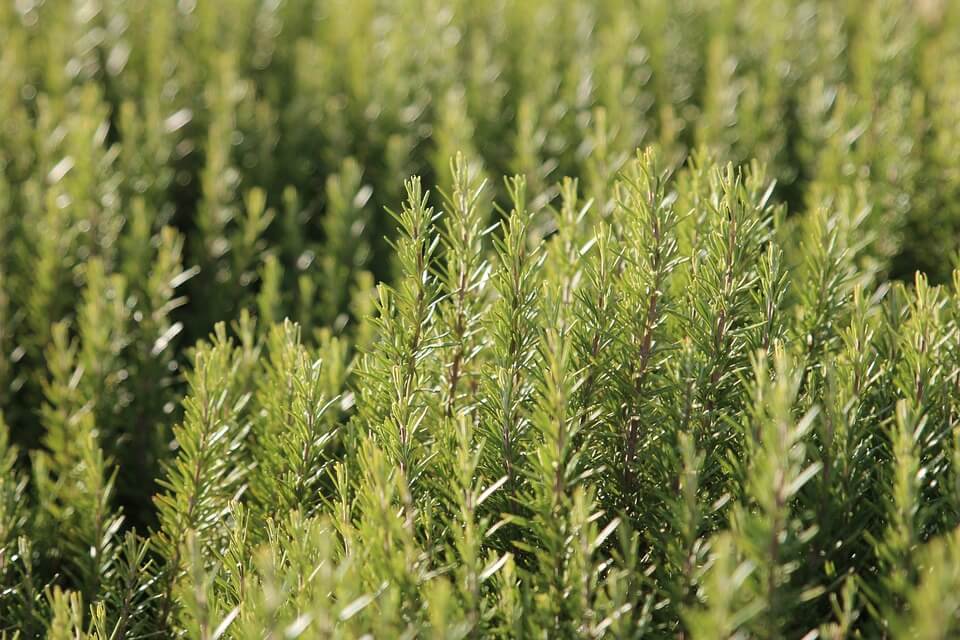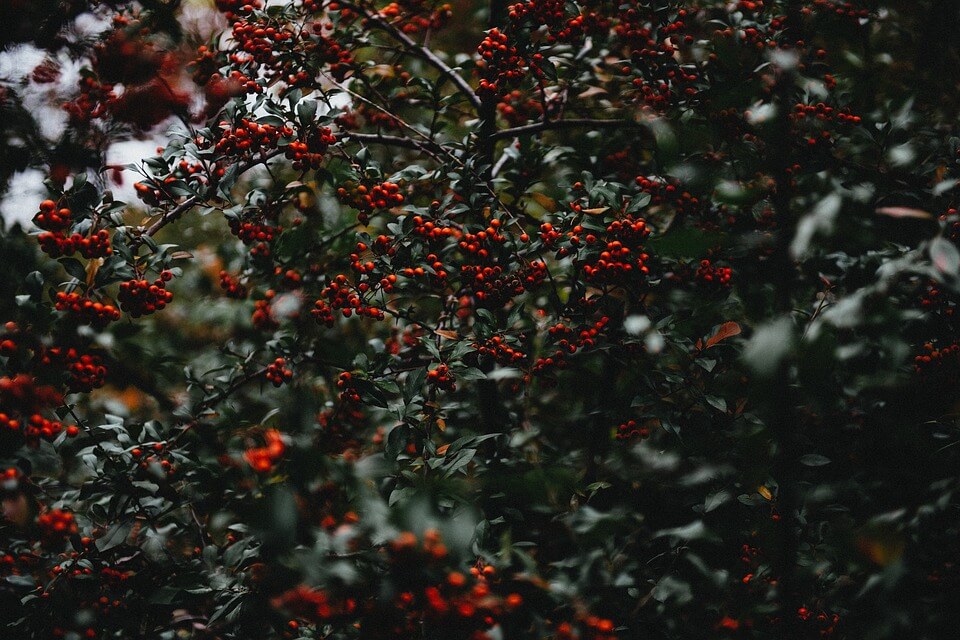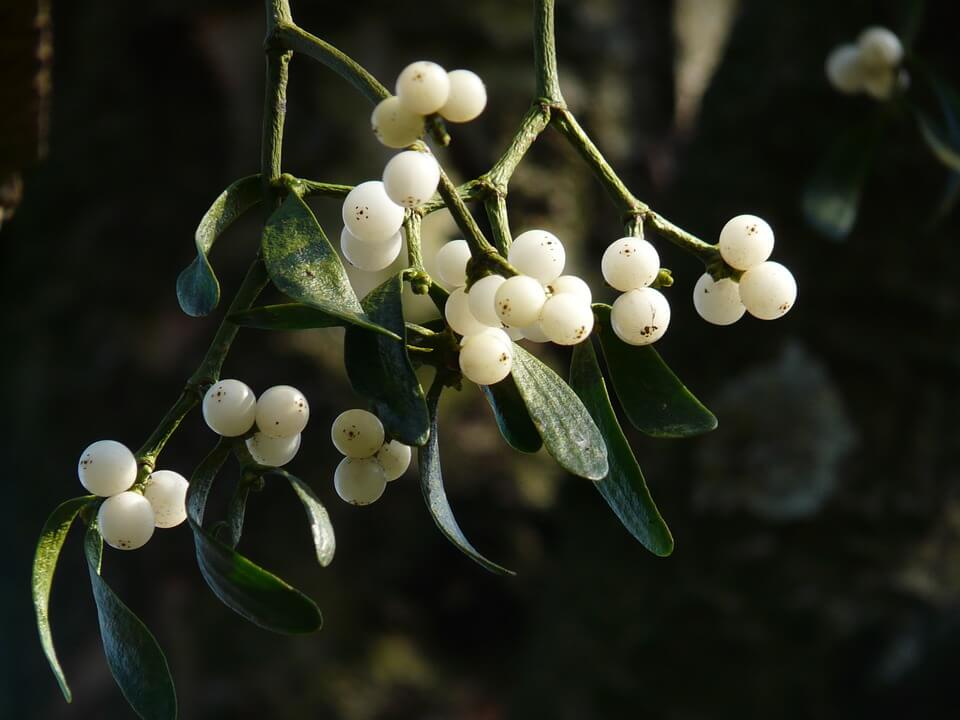
As to why the current roster of Christmas plants – holly, ivy, rosemary etc – exists is often unclear. Many of the plants’ hypothesised pagan origins aren’t well documented and it appears our current roster of Christmas plants are, in fact, a Victorian invention. What we do know is that our pagan ancestors were highly in tune with their environment and fascinated by the changing of the seasons. It is known that the winter solstice was celebrated, and it is likely wintergreen plants were venerated for their resilience and ability to maintain colour. As such, the origin of the plants of Christmas are often simply related to their physiology, or use in agriculture, rather than historical in origin.
Rosemary
Rosemary’s association with Christmas goes back to the Middle Ages when the herb was spread on the floor to be walked on as to fragrance the air. They did this in the belief that nice aromas were good for your health; in particular, smelling rosemary on Christmas Eve was believed to safeguard your health as well as promote happiness for the upcoming year. (Interestingly, one study showed that its aroma may in fact improve one’s prospective memory.) Today, the herb is also used to season our roast as well as decorate our houses and can be regarded as the quintessential Christmas herb.
Holly

Like much that is customary at Christmas today, holly’s popularity was consolidated in the Victorian era when it featured on Christmas cards. Usage of the scrub goes back to Europe’s pagan era when it was used to decorate dwellings because it was viewed as an effective charm against witches and ill-fortune. With the emergence of Christianity, the shrub’s thorns and red berries would prove a perfect accompaniment to the religion’s imagery. The former representing the crown of thorns and the latter Jesus’ blood shed on the cross.
Holly also functions as a key source of nutrients for the woodland ecology in winter, in particular for small-berry eating birds such as the Mistle thrush. The plant is wintergreen and has the highest calorific value of any plants consumed by herbivores in the United Kingdom. Humans once managed the bush as to create protected holly enclosures called hollins or holms. They would harvest the plant by cutting off large chunks above head height and leave it to wilt as to create deer fodder. Until very recently, rural communities fed their ponies on a diet of wilted holly.
Ivy
Traditionally, ivy has been compared to holly as it was believed that the former is female and the latter male. In fact, both ivy and holly are dioecious and possess either male or female sex organs. As such, without a partner of the opposite sex, a lone plant is unable to seed. There are a number of myths documenting the special powers of this most adaptable plant at Christmas. In is known that as recently as the 1930s farmers would give their cows a sprig of ivy on Christmas day as to fend off the devil. It was also once believed that ivy could limit the negative effects of alcohol. Traditionally, ivy as well as holly, was utilised as a easily available material to create wreaths and other Christmas decorations.
Mistletoe

It is often claimed that the custom “kissing under the mistletoe” has pagan origins, emerging from Norse mythology, or perhaps the Roman festival of Saturnalia. One story goes that Hoder slew his brother Baldur with a spear of mistletoe over the female Nanna. Another, is that the sexual license of festival of Saturnalia combined with the Celtic use of mistletoe, although, it must be mentioned that neither of these accounts are well documented.
Instead, the tradition may originate from the plant’s etymology and form. It’s Latin name is viscum album, with viscum meaning sticky and album white. The plants appearance – its forked branches, coupled leaves and white sticky juices – can be interpreted in different ways, perhaps to represent sexual organs. In all probability the custom emerged in the 18th century. One early reference occurs in Lady’s magazine in 1784. Another, in 1791, from the newspaper the Star, confirms this, reading: “a custom of kissing women under the Mistletoe bush still prevails in many places”.
Poinsettia
Poinsettias are from Mexico and subsist in warm tropical climates that we do not associate with Christmas. Ostensibly, a Mexican fairy tale links the plant to Christmas. It states that a poor girl’s meagre offering of weeds to Jesus on Christmas Eve magically evolved into poinsettias, giving the plant its Mexican name “flowers of the holy night”. In fact, their association with Christmas originates from a New York department store’s decision to sell the plant in the holiday back in the 1870s. In the early nineteenth century, the plant was brought to America by Joel R. Poinsett, from whom its English name derives.
Christmas Tree

The Christmas tree originates from Strasbourg, Germany. It was here in the 17th century where the tree was first decorated and named after the Christian holiday. In the 18th century, the practice spread throughout Germany and was popularised by Goethe in his novel, the Sorrows of Young Werther. It spread to Britain with the German Prince Albert marrying Queen Victoria, and arrived in America with Pennsylvanian German immigrants. Although, its popularity was only consolidated after 1848 after an American newspaper carried a picture of Christmas tree.
–
Jorge works in the Primrose marketing team. He is an avid reader, although struggles to stick to one topic!
His ideal afternoon would involve a long walk, before settling down for scones.
Jorge is a journeyman gardener with experience in growing crops.